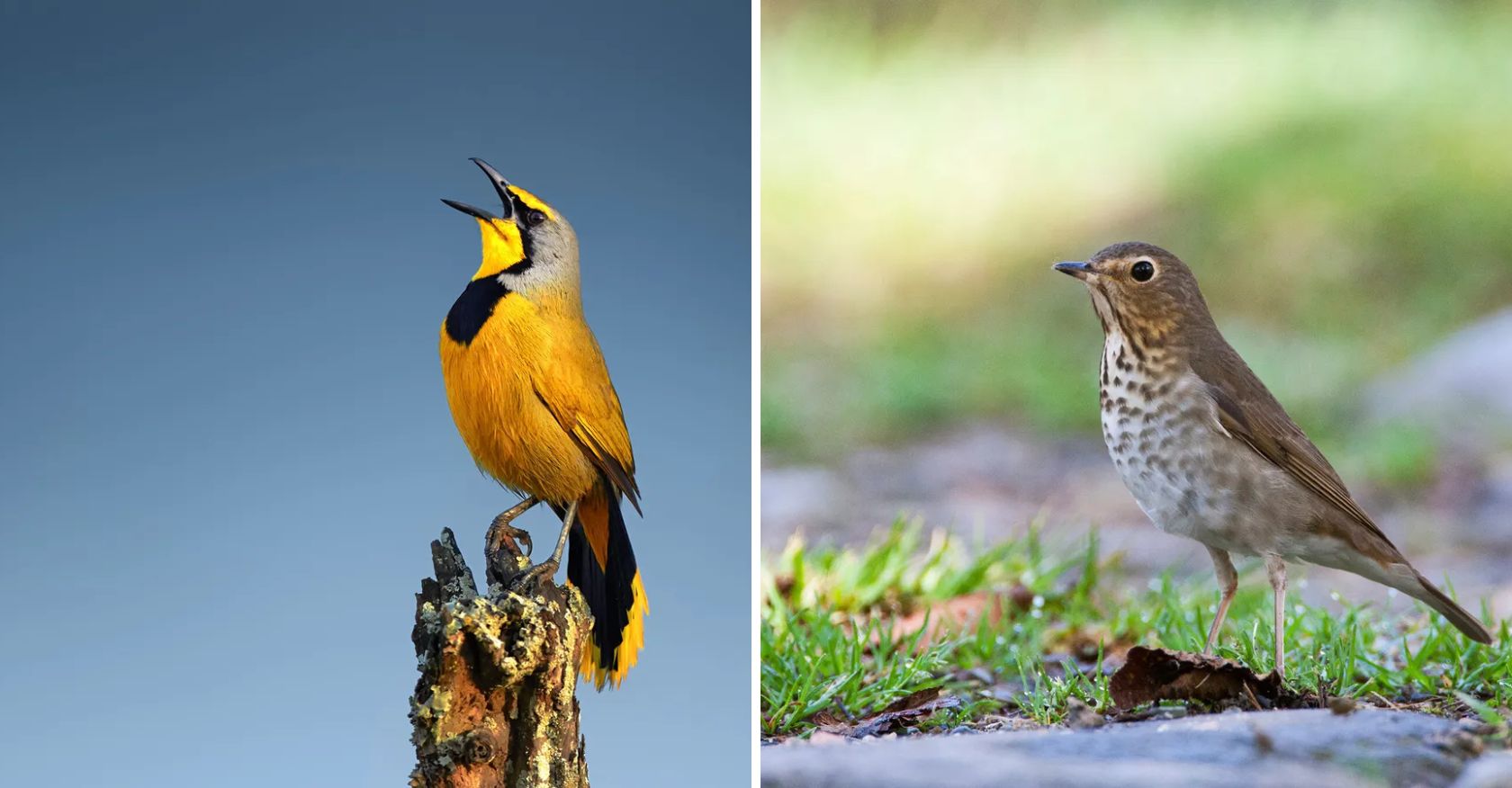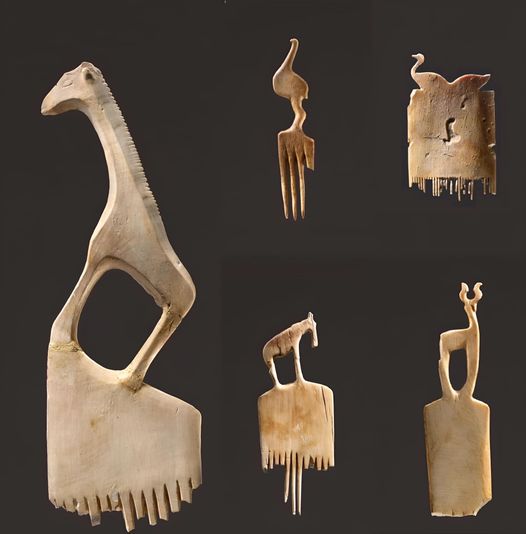Birds’ Communication
May 8, 2023 by Kieu Trinh

The air is filled with the sweet sounds of birds across the globe on any given day. Looking out your window, you might even spot a bird displaying to its partner or its neighbor.
Birds are highly communicative creatures and they have many ways of getting their message across to each other. So how exactly do birds communicate and what are they telling each other?
Birds produce a phenomenal array of different sounds, from high-pitched whistles to deep hooting and everything in between. All of these sounds are made to communicate something to other members of their species. Birds have a second and arguably even more diverse way of communicating, however, Birds communicate with their bodies through movement, color, and feather development.
Birds communicate for many different reasons, sometimes to attract others, and sometimes to keep others away. They can recognize each other by their voices, and use sounds and actions to keep in touch, beg for food, and even sound the alarm when danger threatens.
This article covers the amazing world of bird communication. Read along to learn all about this fascinating behavior!

Bokmakierie (Telophorus zeylonus) calling, South Africa
Different methods birds communicate
Communication between individuals of any species (birds included) relies on sending and receiving information in a format that can be perceived and understood by both parties. The sense of hearing and sight are highly developed in birds, so it comes as no surprise that they use these two mediums to communicate with each other.
Continue reading to learn how birds communicate with sounds and actions.
Vocal Communication
Vocal communication in birds can be broken down into songs and calls. These two terms are often used interchangeably, but scientists separate them based on their message and function.
Songs
Birds use songs for reproductive reasons. Some birds, like wood thrushes and song sparrows, produce wonderfully musical songs, while others are not quite as gifted. No matter how they sound to us, however, other birds get the message loud and clear.
Bird songs are often long and complex, even including two different sounds produced at the same time. The quality of the bird’s song can indicate the health and fitness of a male bird. This can be useful for attracting a female or be a firm reminder to his neighbors that he is still the boss on his turf.

Calls
Birds use shorter, less complex sounds to communicate all sorts of information. Contact calls, for example, are usually soft and somewhat indistinct sounds that birds make to stay in touch with each other as they forage. These calls must be loud enough for each individual in a pair or group to hear, but not so obvious that they attract the unwanted attention of predators.
Alarm calls are louder sounds that birds produce when they detect a threat such as an owl or cat. These harsh-sounding calls alert other birds in the area and perhaps serve to deter the predator by convincing them that their cover is blown.
Non-vocal sounds
Birds generally use their syrinx to make the sounds used for communication. This structure in the bird’s chest area is the avian version of our larynx or voice box. Some birds produce sound in other ways, however. Some examples of these non-vocal sounds include:
- Woodpeckers drumming on wood and other resonant objects
- Owls and many other birds snap their bills together
- Pigeons and owls use wing clapping to signal alarm and display to females

Red-bellied Woodpecker drumming on a tree
Visual Communication
Birds are very well known for singing and communicating with sound, but they are also able to communicate in silence, simply through movements and gestures. This form of physical communication is known as display.
Birds can use a variety of movements to communicate simple messages. For example, you could see any of the following movements when watching a group of birds around a feeder:
- Head movements like bobbing, tilting, etc.
- Wing movements like shaking, lifting, etc.
- Crouching
- Rasing feathers and crests
Simple body language like this is often used when birds show dominance and submission, but birds also use more complex movements during territorial aggression. The most elaborate displays are often seen when male birds attempt to attract females, however.
Mating displays are often used to show off a male bird’s most attractive features, like the bright colors and long feathers that many species develop ahead of the breeding season.
Some birds use more elaborate displays than others, however, including wonderfully choreographed dances, or acrobatic displays of flying prowess.

Hoopoe with a raised crest
Can birds communicate with other species?
Birds have very little reason to communicate with other species, but there are a few occasions when this ability really comes in handy.
Birds can communicate with other species when they feel threatened. When a bird is under attack, it will often attempt to make itself look larger and more intimidating to deter its attacker. Birds often do this by spreading their wings and puffing out their feathers. Young owls are a great example of this behavior.
While attempting to look more visually threatening, birds will also produce alarm and distress calls, shrieks, and even hissing sounds. Birds also produce alarm calls when they are not under direct threat and this helps to alert other birds in the area.
Birds of many different species will come to investigate alarm calls, so they clearly understand the message!
Redshank producing an alarm call to warn nearby chicks of danger
How do birds communicate over long distances?
Birds can use songs and calls to communicate over long distances. This form of communication has many benefits. For example, birds don’t have to be able to see each other, which comes in handy in dense environments like forests and swamps, or after dark. Communicating over long distances with sound also allows birds to stay concealed and safe from predators.
How far can birds communicate?
The distance that bird calls and songs can carry depends on factors like the surrounding environment, weather conditions, call volume, and frequency. Simple, low-frequency calls such as those produced by ostriches and cassowaries are best for long-distance communication.
Owl hoots tend to travel long distances because of their low frequency and the still conditions at night when interference is low. Owls often occupy large territories, and they have excellent hearing for detecting the calls of their neighbors. Snowy owls, for example, often hold territories of over a thousand acres and can be heard from distances of up to 7 miles.

Snowy Owl calls can be heard up to seven miles away
Do birds tell each other where food is?
Birds usually find food by sight, but they are also highly tuned in to the sounds of other birds. The excited calls of birds around a feeder or natural food source are probably very attractive to other curious and hungry birds in the area.
How do birds communicate in flight?
Many birds like Swainson’s thrushes migrate at night in groups and flocks. This helps them avoid predators and leaves them with less wind to contend with. So how do they avoid crashing into each other and even other birds moving in different directions? The solution is to make soft, regular calls that help the birds maintain their spacing and ensure that everyone is traveling in the same direction.

Wintering Swainson’s thrush
How do birds communicate visually?
Birds communicate both passively and actively. Passive communication is involuntary and controlled by hormones like testosterone and the genetic traits of an individual. The bright-colored plumage that many male birds develop around the breeding season is a classic example of this, but birds also grow longer feathers or change colors on their legs, and around their bills and eyes.
Active communication involves certain postures, movements, feather manipulation, and flight patterns. Head bobbing displays between two territorial northern flickers, or the beautiful dance of sharp-tailed grouses on the American prairie are just two fine examples of visual communication.

The bright breeding plumage of a Splendid Fairywren
How do birds communicate with humans?
Wild birds do not usually communicate with humans, but pet birds certainly do. Pet birds often communicate vocally and visually in ways that their attentive owners can learn to understand. There are some interesting cases in the bird world where wild birds communicate with humans, however.
The Greater Honeyguide of Africa actively communicates with people to guide them to the location of honey. The birds use special calls and movements to capture the attention of humans, and amazingly, they also respond to being called by people. By guiding people to bees’ nests, the birds get access to the wax that they feed on.
Can birds communicate with their babies?
Parent birds generally do not communicate with their babies in any obvious ways. One interesting example of a parent bird communicating with its young can be seen in seagulls, however. The red spot on the bill of adult seagulls serves as a passive message to the babies to beg for food. The babies instinctively know to peck at the red spot and will not attempt to feed from a bird without the red spot.
If you’ve ever been near a nest full of hungry chicks, you will know that baby birds certainly communicate with their parents. The message is simple, feed me!
Baby birds make simple vocalizations to send this message but they also use visual communication to encourage their parent to produce the goods. Many baby birds have brightly colored inner surfaces in their mouths. Opening their mouths and displaying these colors encourages their parents to feed them.

Close up of a Herring Gull – baby seagulls instinctively peck at the red spot to beg for food










